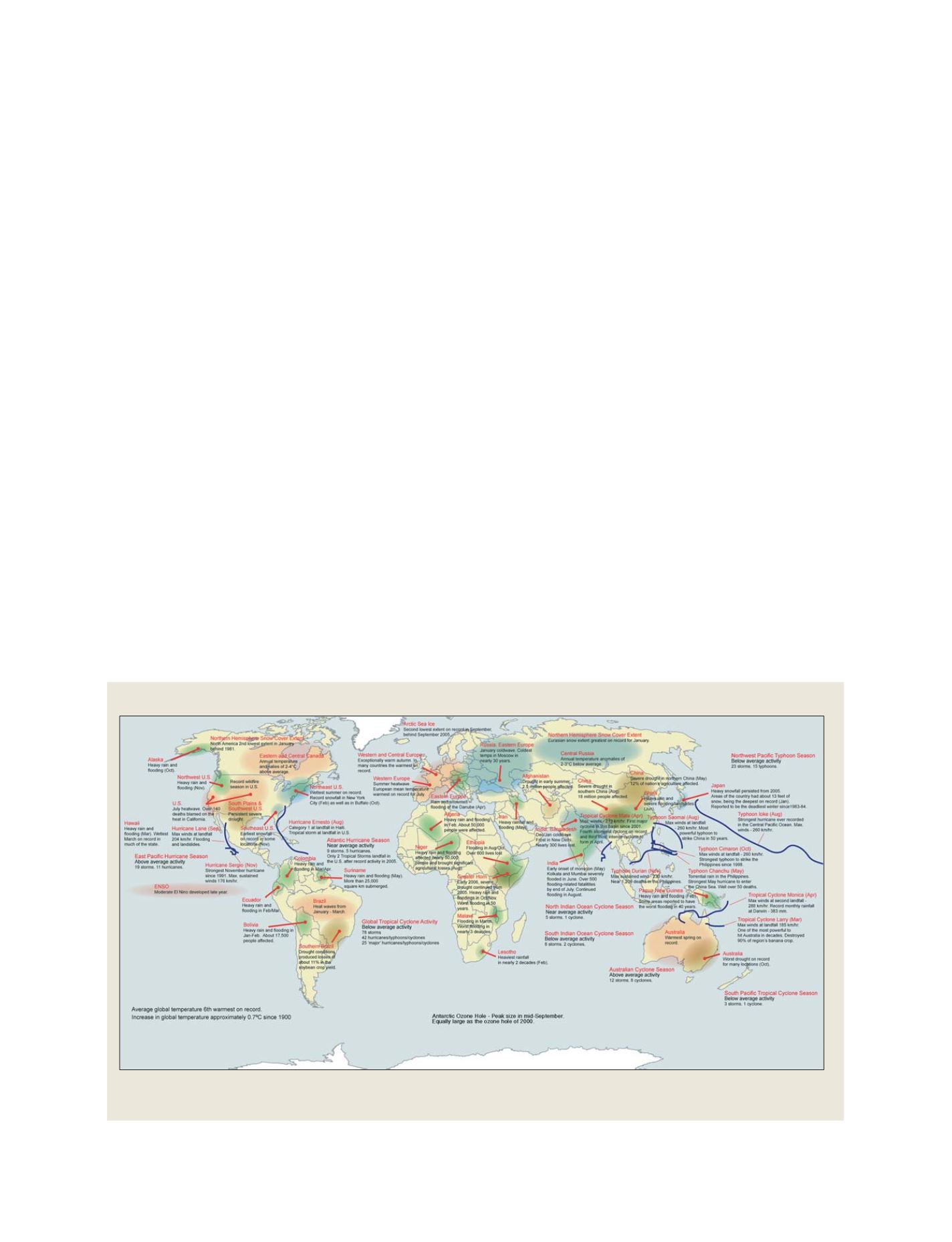

[
] 206
sion makers to understand the state of the Earth’s climate and its vari-
ation and change during the past year. Many observing and analysis
systems are unique to particular countries or regions, but through this
effort, the information from each system can be openly shared. The
report has proven crucial to transitioning data to operational use and
filling critical gaps in current knowledge about the state of the global
climate system.
The
State of the Climate
report seeks to include as many GCOS
Essential Climate Variables (ECVs) as possible.
5
Because the report
focuses on the Earth system as a whole, spatial and temporal gaps
in data coverage are more easily identified as well as deficiencies in
operational systems that provide access to those data. Solutions for
filling those gaps are developed through coordination among scien-
tists from participating countries, which in turn supports monitoring
and analysis of ECVs that was previously impossible. This exem-
plifies how experts from numerous and diverse countries can work
together on an ongoing basis to provide information which is essen-
tial to environmental decision making.
The combination of data collection, analysis and reporting on
climate conditions through the
State of the Climate
report is closely
aligned with the scope and principles of GEOSS. With a focus on
integrating observing system data to useful and accessible infor-
mation, the
State of the Climate
report serves as a hallmark
achievement of GEOSS efforts to use integrated global Earth obser-
vations to monitor and enhance the understanding of climate
variability and change. It serves as an avenue for providing infor-
mation that decision makers can use to better understand the
changing environmental factors that affect human health and well
being. It also positions them to anticipate and manage future risks
associated with climate variation and change.
Scientists from institutions in 21 GEO member coun-
tries participated in
State of the Climate
reporting in
2007, with scientists from an additional dozen countries
that are not yet GEO members also making key contri-
butions.
6
Monitoring the state of
the climate in the future
The
State of the Climate
report is distributed through
publication in the bulletin of the American Meteorological
Society each year. The report is also translated into other
languages and distributed to WMO member nations.
Included in the 2006 report was a summary of more than
20 ECVs, from beneath the ocean surface to the upper
atmosphere, and in every region of the world. A diverse
set of topics included but was not limited to: surface and
upper air temperature, precipitation, atmospheric trace
gases, ocean salinity, circulation and carbon content, snow
cover, sea ice, sea level, and stratospheric ozone.
The focus for the future will be on bringing together
new contributing partners from other GEO member
countries and further enhancing capabilities associated
with the collection, processing and analysis of data from
newly deployed observing systems. Potential linkages
with additional GEO participating organizations will
also be explored, with efforts focused on enhancing the
capacity to observe, analyse and report on many more
ECVs in future reports. This will provide leaders with
an even greater resource for monitoring the Earth’s
climate.
Significant climate anomalies and events in 2006
The 2006
State of the Climate
report included more than 130 pages of text summaries along with more than 100 graphs and depictions of significant
weather and climate conditions combined with historical perspective provided by decades to centuries of climate observations
Source: State of the Climate working group
S
OCIETAL
B
ENEFIT
A
REAS
– C
LIMATE
















